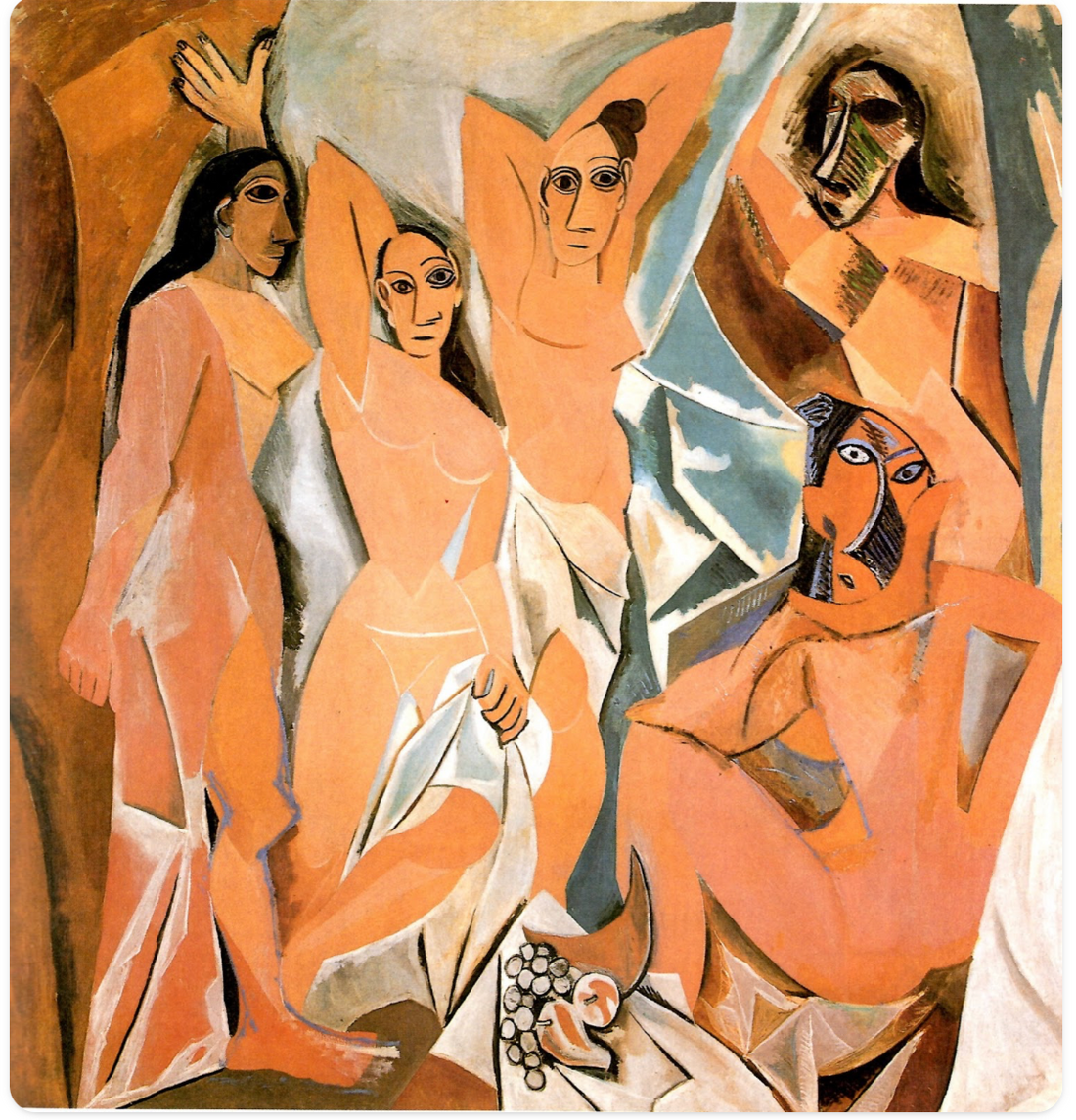The Cubism art movement was the catalyst of abstract art, a genre we think today of as contemporary art. It was a revolutionary art movement that transformed what we consider as art, both in its form and the materials used.
The Cubists represented reality by looking at objects from multiple angles and were focused on creating a more realistic perspective of how we see in real life.

Pablo Picasso, Girl with Mandolin, 1910
The lead player in the Cubism movement was Picasso, who was at the forefront of pushing new artistic boundaries. Prior to Cubism, expressionists in Europe were turning inward to express their innermost feelings, which led to a deconstruction of form, in a more fluid representation.

Edvard Munch, The Scream, 1893
The reaction to the expressionist movement was Cubism, which seeked reason and design in contrast to an emotional response of the Expressionists. The Cubists were predominately seeking truth, logic and design to get closer to an accurate visual representation.
Today we may consider a photograph as representing reality. However when you consider how we see, we don’t see everything in one still frame, our imagination makes up our peripheral vision. And our eyes are constantly changing what we see, very rarely do we actually sit still and see the same thing from the same perspective.
The earliest documentation of Cubism is 1907, Les Demoiselles d’ Avignon. Prior to painting this, Picasso visited the Ethnographic Museum at Palais du Trocadero, and even though he dismissed its influence the African sculptures clearly influenced the organic forms used and exaggerated features.

Picasso, Les Demoiselles d’ Avignon, 1907
This painting was considered so radical and strange, even Picasso’s friends did not initially understand the painting. They did join him on their joint mission to create a visual revolution and shake up the art world. The Cubists were conscious in creating a new world order, with symbolism on the canvas, and now considered an early form of conceptual art.

George Braque, The Portuguese, 1911
Early Cubists restricted their palettes to greys, ochre, browns, dark saturated green with the occasional accent of bright red. Anything vague, unreal, undefined was sacrificed for the pursuit of reality.
The previous Impressionists movement that accentuated light and atmosphere was its polar opposite. Below is an example from Claude Monet, but Van Gogh was also considered an Impressionist.

Claude Monet, Sunrise, 1872
In contrast, Cubism composition was well thought out, preplanned, and had its roots in manmade structure, architecture, again focusing on logical and reasoned thinking. The creative practice was to deconstruct a 2D image, then to reconstruct in geometric form.

Juan Gris, Still Life with Checked Tablecloth, 1915
Cubism is considered an intellectual type of art, whereby the artists are pushing conceptual boundaries with a reasoned and logical process. Those repercussions are still felt today whereby the concept of what the artist is trying to express is as much a part of the art as is the aesthetics of an artwork.
The Cubists were influenced by discoveries within psychology and physiology on the truth of sensory perception around the 19th Century. The scientific discoveries led the Cubists to consider what we see as an optical illusion. As previously mentioned, for example, we now know that our peripheral vision is made up mostly of our imagination. Our eyes actually only see a relatively small part of what’s in front of us and the outskirts of that image is what our brain edits the image filling it with details. And colour can also be interpreted by our brains differently, we all remember the controversy surrounding the dress that went viral. Did you see a gold dress or a blue dress?
A Cubist term ‘the 4th dimension’ broke objects open, flattened them out and took several vantage points to give an illusion of depth, time, space.

Marcel Duchamp, Nude descending staircase, 1912
The pursuit of truth led Cubists to incorporate raw materials into their art, using paper collage, wood, marble. This gave a new tactical dimension to Cubism, and brought in objects previously not seen as connected to art, but were previously restricted to craft, hobby and everyday objects. They were the first artists to embrace collage as an art form, thrusting it into the realm of fine art. By Picasso and George Braques taking on a new medium it elevated its prominence and significance.

George Braque, Bottle, Glass and Newspaper, 1914
The impact of Cubism can’t be underestimated in its novelty, opening up new materials, a new visual language that rippled up to contemporary art today. It ultimately led to breaking free of conventional painting and art making.
Post Cubism we see the likes of Sonia Delouney, and Kandinsky taking influence from Cubism but liberating the restricted palette of Cubism to a more expressive form. This broke open new ways to represent imagery in a sensory manner.

Sonia Delauney, Rhythm Colour no. 1076, 1939
